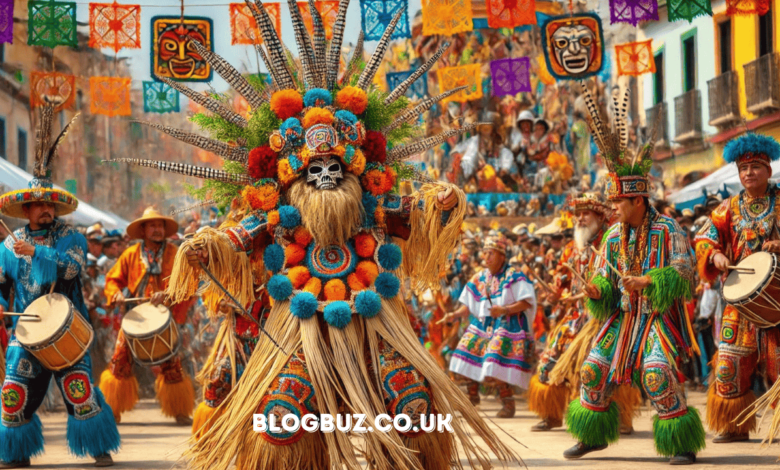The Cultural Significance of Ciulioneros: A Deep Dive into Tradition and Modern Influence

Ciulioneros is a term that encompasses a rich tapestry of cultural heritage, often associated with indigenous communities who have preserved their customs, rituals, and art forms across centuries. These communities, known for their unique traditions and vibrant celebrations, are essential in their regions’ social, political, and artistic landscape. While rooted in history, Ciulioneros continue to thrive today, adapting to modern influences while maintaining their core values. This article delves into the significance of Ciulioneros, exploring their history, cultural practices, challenges, and ongoing efforts to preserve their legacy.
Origins and Historical Background
The history of the Ciulioneros can be traced back to pre-colonial times when they were crucial figures in maintaining oral traditions, religious practices, and local folklore. Originating from regions rich in cultural diversity, the Ciulioneros played a role as spiritual leaders and cultural custodians, using their art forms—particularly music and dance—to convey historical narratives and community values. Their costumes, adorned with intricate designs, reflect the natural world and ancestral symbols, embodying the deep connection between the Ciulioneros and their environment.
As colonial forces imposed new social structures, many indigenous communities faced significant pressure to abandon their traditional practices. However, the Ciulioneros proved resilient. They adapted their traditions to changing circumstances, ensuring that essential aspects of their identity, such as storytelling, music, and dance, survived. Today, their cultural expressions are visible in festivals, ceremonies, and art forms, serving as a living testament to their rich history.
Cultural Practices: Music, Dance, and Art
Music and Dance
Music and dance are central to the Ciulioneros’ cultural identity. Traditional instruments like drums, flutes, and string instruments create rhythmic patterns that set the tone for gatherings and ceremonies. These art forms are not merely for entertainment; they are a medium through which the Ciulioneros pass down historical events, spiritual beliefs, and communal values.
Dance, in particular, holds significant meaning. Performers often wear elaborate costumes that symbolize protection, wisdom, and authority. Their movements are carefully choreographed to represent individual and collective stories, creating a visual narrative that resonates with the community. Women typically lead the dances with graceful, flowing steps, while men exhibit strength and endurance, showcasing the complementary roles within Ciulionero society.
Artistic Expression
Art is another powerful aspect of Ciulionero culture. Their creativity manifests in intricate textiles, pottery, sculptures, and contemporary street art. Each piece of art tells a story, often representing local legends, natural elements, or the spiritual world. Traditional Ciulionero textiles feature bold patterns and colours, symbolizing life, nature, and the cosmos.
In recent years, younger generations have embraced modern techniques in their artistic expressions, blending traditional themes with contemporary styles. This fusion keeps the cultural heritage of the Ciulioneros alive while allowing it to evolve in a globalized world. Many artists from the Ciulionero community have gained local and international recognition for their work, which celebrates their cultural roots.
Traditional Celebrations and Festivals
Ciulioneros are known for their vibrant and joyous festivals, which serve as occasions to honour their ancestors, celebrate the natural world, and reinforce community bonds. One of the most significant events is the Harvest Festival, where the community comes together to give thanks for the abundance of crops. During this celebration, participants wear traditional attire and partake in rituals, music, and dance that reflect their connection to nature.
Another notable event is the Water Dance Celebration, which marks the start of the rainy season. This festival is a time of joy and renewal, as participants engage in playful water games while performing dances that symbolize the cycles of nature. These festivals unite the community and offer a space for passing down traditions to younger generations.
Cuisine and Its Cultural Importance
Food plays a central role in Ciulionero culture, with traditional cuisine often featuring locally sourced ingredients that reflect the seasons. Maize, a staple food, appears in many forms, such as tortillas and tamales. These dishes are often shared during community gatherings, fostering connection and reinforcing cultural identity.
Herbs and spices such as cilantro, garlic, and chilli peppers are commonly used to flavour dishes, imbuing meals with the tastes and aromas of the region. Traditional desserts, like flan or tres leches cake, are enjoyed during celebrations, adding sweetness to the communal experience.
Challenges and the Fight for Preservation
In today’s rapidly globalizing world, the Ciulioneros face significant challenges in preserving their cultural heritage. Younger generations, often influenced by mainstream media and urban lifestyles, may feel disconnected from their traditions. Globalization threatens to homogenize local cultures, making it difficult for indigenous practices to survive in their original forms.
Moreover, urbanization and the encroachment on traditional lands have disrupted the Ciulioneros’ connection to nature and their ancestral roots. With many younger people moving to cities for better opportunities, the transmission of knowledge and practices from elders to the youth has weakened. There is also the risk of cultural commodification, where traditions are simplified or altered for tourist consumption, diluting their original significance.
Efforts to Preserve Ciulioneros Culture
Despite these challenges, efforts are being made to preserve the Ciulioneros’ unique traditions. Local leaders, activists, and cultural organizations have taken steps to document oral histories, create educational programs, and establish cultural centres dedicated to celebrating and preserving their heritage.
Festivals and cultural events remain critical to these efforts, allowing the community to engage with their traditions meaningfully. Educational programs, particularly those aimed at younger generations, focus on teaching the language, music, and dance of the Ciulioneros. In addition, collaborations with universities and museums have helped raise awareness of the importance of preserving this cultural heritage.
Social media platforms have also become valuable tools for promoting and sharing Ciulionero culture. Many community members use these platforms to share stories, music, and art, reaching a global audience while fostering a sense of pride in their identity.
Conclusion
The Ciulioneros are a testament to the resilience and adaptability of Indigenous cultures. They continue honouring their ancestors and passing down centuries-old traditions through their music, dance, art, and festivals. However, the challenges they face today cannot be ignored. The pressures of globalization, urbanization, and cultural erosion pose significant threats to their way of life.
FAQs
What does Ciulioneros refer to?
Ciulioneros is a culturally significant group known for its unique traditions, including music, dance, and art, which are deeply rooted in indigenous heritage.
Are Ciulioneros traditions still practised today?
Many Ciulioneros traditions are still practised today, particularly during festivals and community events. While modern influences have affected some customs, the core practices remain intact.
Why is it essential to preserve Ciulioneros culture?
Preserving Ciulioneros’ culture is essential to maintaining their unique identity and history. It ensures that future generations understand and appreciate their cultural roots and keeps the legacy of their traditions alive.
How can one learn more about Ciulioneros culture?
To learn more about Ciulioneros culture, one can visit cultural museums, attend local festivals, or engage with educational programs celebrating their heritage.
You May Also Read: Embracing Llaquichan: A Deep Dive into Andean Cultural Heritage




